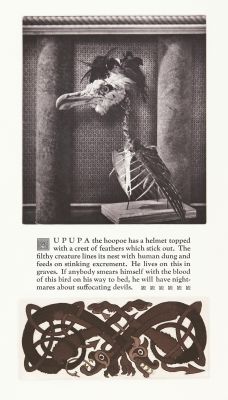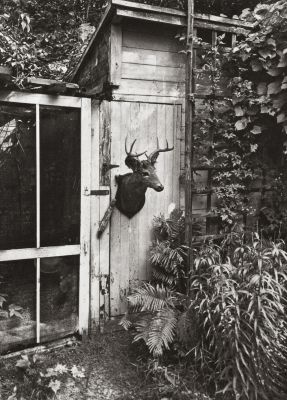
Title
CoyoteArtist
Morrish, David (Canadian, b.1953)Date
1995Process
PhotogravureAtelier
DeadCat Press, Ontario, CAImage Size
17.8 x 21.6 cmSheet Size
29 x 40 cm
My photographic exploration of animal taxidermy has evolved from the examination of individual specimens (as portraits) to the discovery or placement of animals in unusual contexts. Although taxidermy is still in the forefront, the relationship between the animal and its environment plays a greater role, thus adding a level of mysterious narrative to each situation. The photogravure process transforms this photographic information to image-as-object and creates a dissonance far more pronounced than the artificiality of the taxidermy alone.
Coyote is from ‘Locomotive Torpor’, a suite which documents small, dried animal remains and presents them as fossil-like impressions using ink on paper. The attraction to these small creatures is greatly magnified by their individual animation. They seem active, gesturing, locomotive. The gestures or implied movement of each specimen contradict their mummified state. The greatly enlarged scale allows the viewer to explore the minutiae of the usually unexamined detail. Each creature is presented on a sheet of heavy paper, hung from specimen pins through metal grommets. The images are imprinted into the fibers of the paper in ink by a photogravure plate to echo the fossil-like nature of the specimen.
The rich beauty of the historical photogravure process represents most of my other work and is a jumping off point for my book works, artistamps and many mixed media potentialities.
David Morrish — 2006
David Morrish lives in Prince Edward County, Ontario and co-authored with Marlene MacCallum, Copper Plate Photogravure, Focal Press, 2003. Morrish has exhibited traditional copper plate photogravure prints since 1996, nationally and internationally. His artist’s book-works, GAZE and DIED use copper plate photogravure and letterpress under his imprint: DeadCat Press. His recent research explores animal and human mortality, faux biography, provenance, collections, and the museum archive through the construction of an immersive Wunderkammer, The Lyric Cranium.











